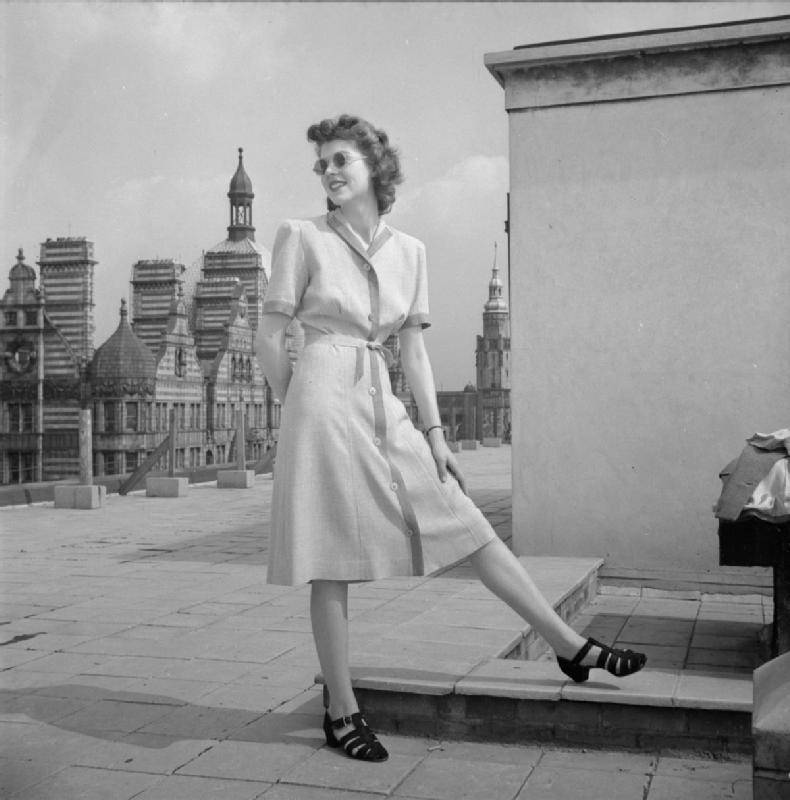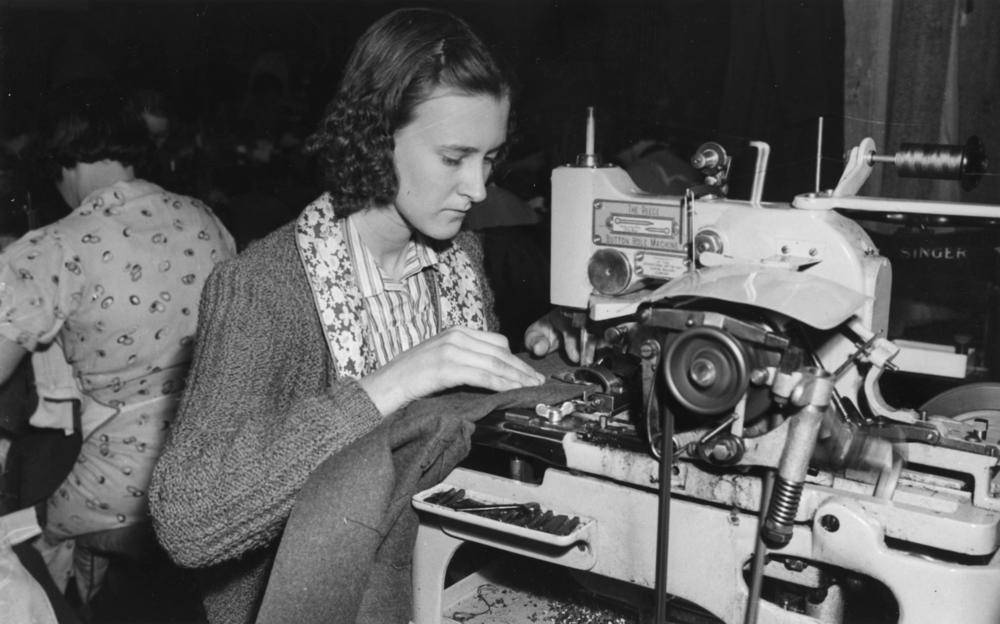In September 1939, Great Britain and France went to war against Germany because Hitler captured Poland. Thus marking the advent of world war 2 from September 1st, 1939, to September 2nd, 1945. The world underwent a massive change during the entire span of the war. And there were multiple facts about the war for the generations to follow, with a special intend on fashion as well. Thus marking the rise of the concept – of fashion and world war 2.

Nonetheless, if we leave aside all other changes and only focus on the fashion industry, the picture underwent a massive change. There was a “rationing of clothes”, people were made to recycle and use their daily wear, and most importantly, the fashion hub in Paris shifted to the USA. Thus giving rise to what we call the “American look.”
Notable facts
- From 1941’s 1st June Great Britain underwent rationing of clothes. Oliver Lyttleton did announce the same as a president of the Board of Trade.
- The utility clothing scheme of 1942 was a hit.
- New mothers got access to 50 coupons.
- There was a shortage of raw silk materials.
- Regular civilian clothes were manufactured practical and stylish.
- The blackout restriction led to the rise of illuminated accessories that glow in the dark.
- The “siren suit” was a popular trend during the war.
- Brands like Hugo Boss, Channel, Louis Vuitton, and Dior survived the war and later reached their pinnacle of success after World War 2.
- Claire McCardell is the face behind the “American Look. ”
- Cosmetic brands switched from basic to essential war production during World War 2.
- Hairstyles and makeup became more popular during the second world war as the clothes were last season.
- Beetroot juice was used as lip color and boot polish instead of mascara.
Nazi’s role in Fashion during world war 2
During World War 2, Hitler and his party acted as a controlling force in European fashion. As per the dictator, “a Nazi-controlled fashion industry would aid sure shot victory for German forces in the world.” The Nazis went too far, establishing the Deutsches Modeamt (Reich Fashion Bureau), controlling how German woman will dress. The Bureau made it clear that German women would only wear German-crafted clothes with German material.
Now moving onward, the organization known by the name “association of Aryan clothing manufacturers” did steal the show. The clothes by them were guaranteed to be touched by only Aryan hands. A traditional image was portrayed, and people wore “Tracht” – a regional folk costume symbolizing the Volkish Spirit.
In 1940, France was under Nazi attack, and all forms of communication to Paris were discontinued. That is not all, and the Nazi officials did raid the headquarters of the Chambre Syndicate, seizing essential archives with all the information about fashion houses, clients, and the export trade of France. Coming forward to save the day, Lucien Lelong, an Haute Couture designer and the president of Chambers Syndicate, did visit Berlin to reclaim those files. He did comment, “Parisian Haute Couture is best left in Paris.”
The Make Do and Mend movement and Clothes rationing
From June 1941 to 1949, Britain’s government came up with a campaign called “Make do and Mend,” backed by the system of clothes rationing. People were encouraged to reimagine their pre-existing clothes and reuse the same.

As a person living at that time, you could access sixty-six coupons, and men were allowed to buy the bare minimum. Here is a list of clothes one could buy in exchange for coupons.
- Overcoat – 16 coupons
- Blazer or jacket – 13 coupons
- Sweater or waistcoat – 5 coupons
- Trousers – 8 coupons
- Shirt – 5 coupons
- Tie – 1 coupon
- Woollen underpants and vets – 8 coupons
- Socks – 3 coupons
- Shoes – 7 coupons
Stockings were expensive clothing at that time, and women went bare-legged. Instead, they did tan their legs.
Entering the second year of rationing, the number of coupons was reduced to forty-eight. Manufacturers did follow the utility quota, producing 85 per cent of utility clothes out of the total amount. Thus moving forward, they got to produce non-utility clothes freely.
Between 1945 and 46, the coupon allowance was at its least. For the first eight months, between 1st September 1945 to the 30th of April 1946, only 24 coupons could be issued. And shoppers got access to 3 coupons per month.
The siren suit
During World War 2, Winston Churchill introduced the world to Siren Suits as part of fashion. The suit’s main purpose was to provide warmth and maintain the modesty of the citizens taking shelter during nighttime raids. The best part about the suit is that it has ample space and can be worn over nighttime clothes.
As men were busy fighting the war, the children and the women wore the Siren Suits. The ones for children were more geared and comfortable. Ten ounces or four ply wool was used to make the suit. A fur-lined hood was at the top, keeping the child’s ears and head warm as they sought shelter.
On the other hand, Siren suits for women were more focused on the fashionable side. The marketing campaigns showcased women wearing fashionable siren suits but not hiding or running to a shelter. Many did claim that wearing the siren suits did help them in a comfortable way, protecting their modesty.
Rise of the American look
With the ongoing war situation and most of the raw materials getting scheduled for the armed forces, fashion became minimalistic during World War 2. Previously, it was Parisian couture that dominated the fashion world with fancy ruffles, decorative buttons, and huge balloon sleeves. Now, such an arrangement was completely meaningless for countries affected by war. As a result, Paris lost its grip on the fashion world.
Also, the Holocaust was a huge blow for the German tailors of Jewish origin. And those who survived settled in New York or London but found it difficult to settle down or regain their old glory.
On the other hand, Americans did preach a new look with minimalistic inputs under the supervision of the American Designer Claire McCardell. Her book “what shall I wear?” 1959 became famous and is still coveted as one of the topmost works.
In the wake of World War 2, the fashion industry changed and evolved for the better. The designers did come forward for a common cause, and the civilians learned how to go fashionable with limited sources.



